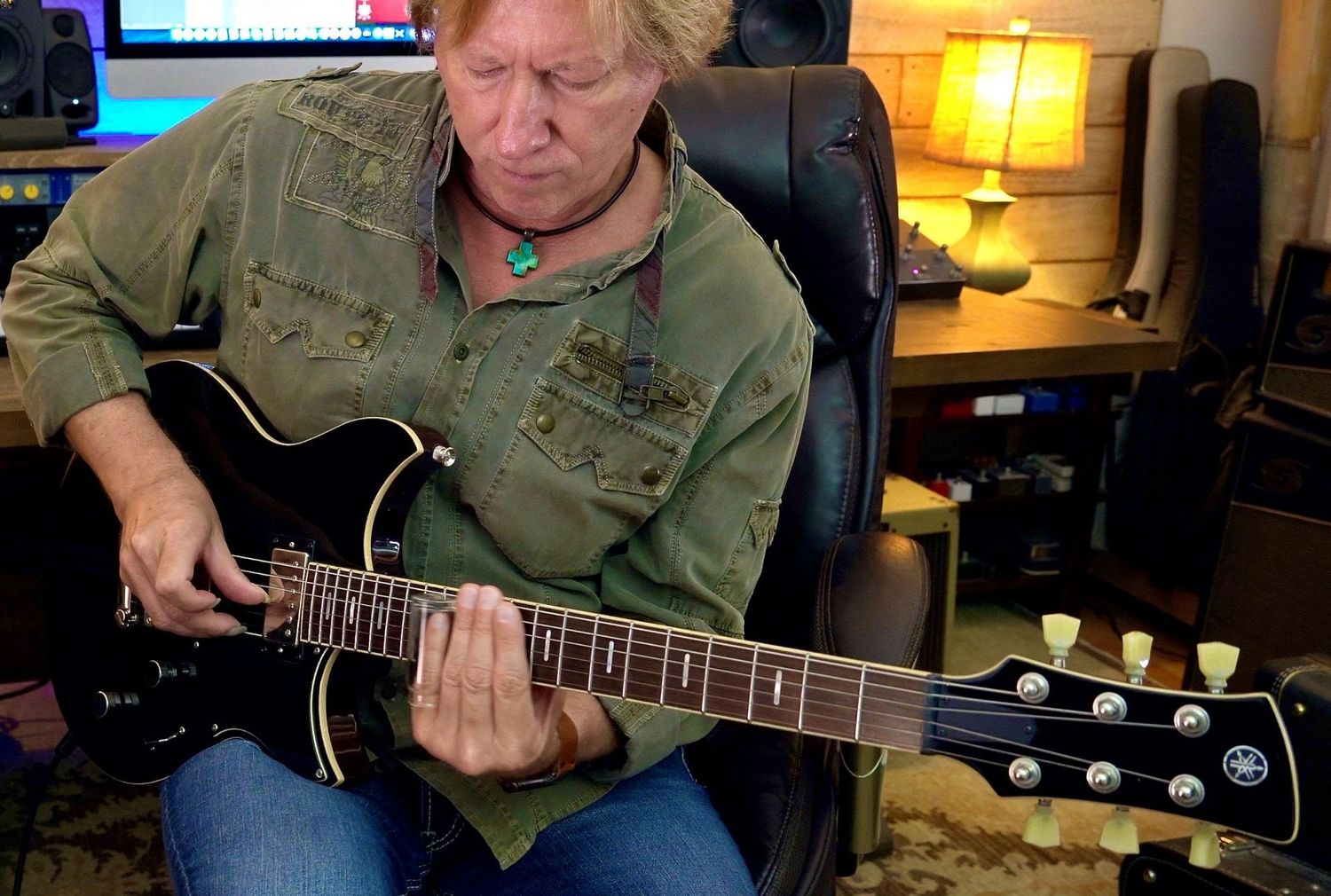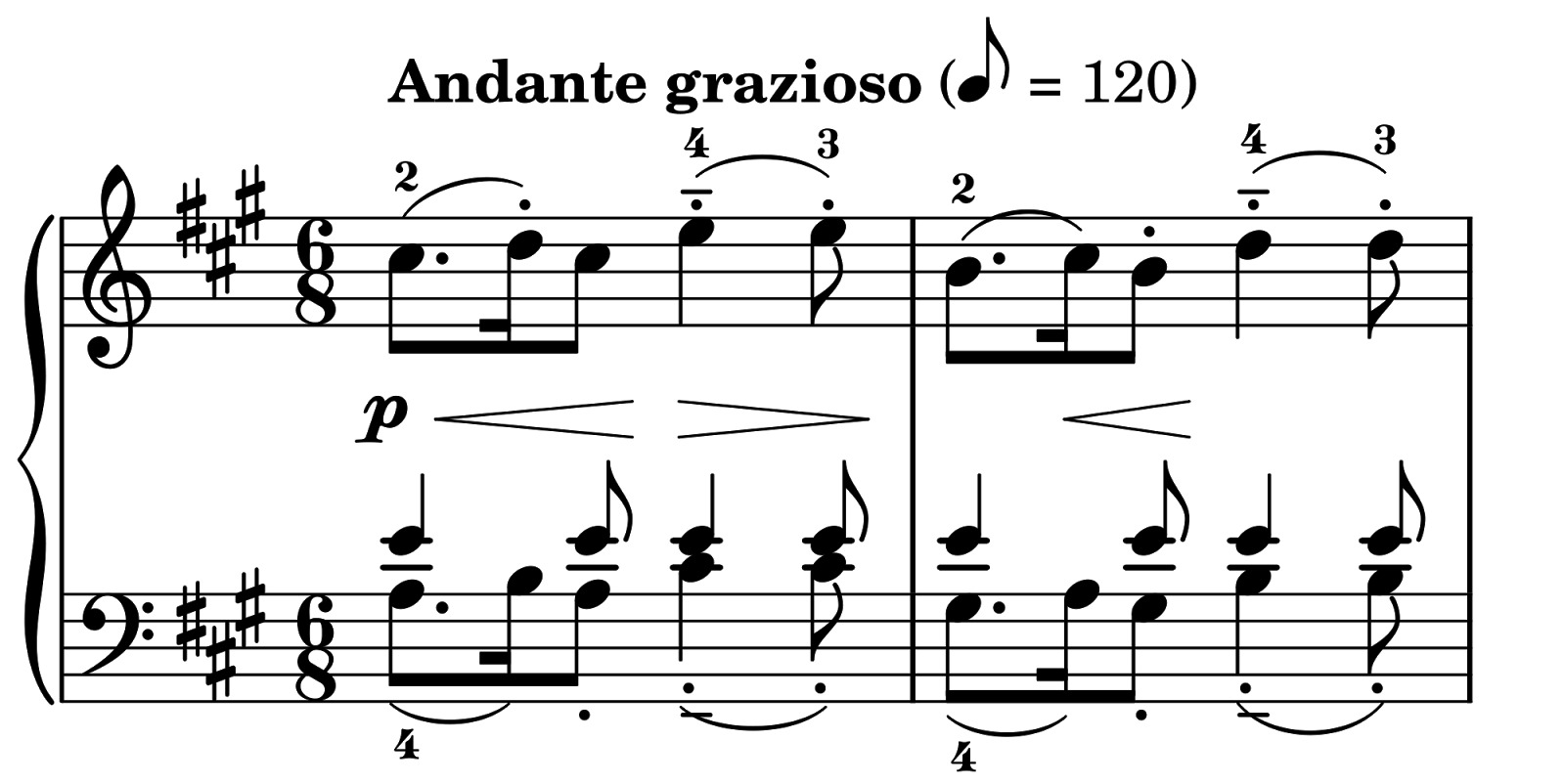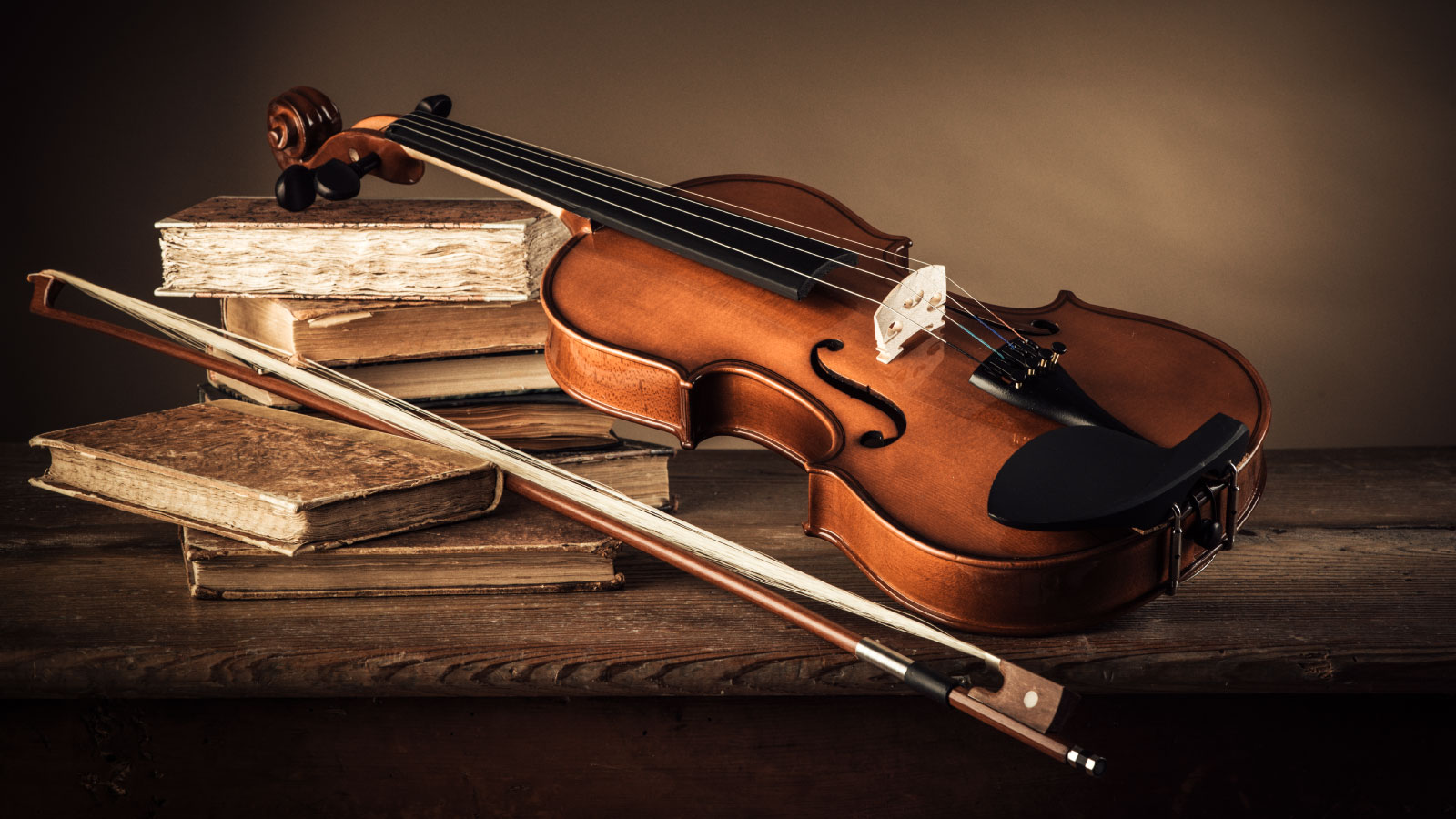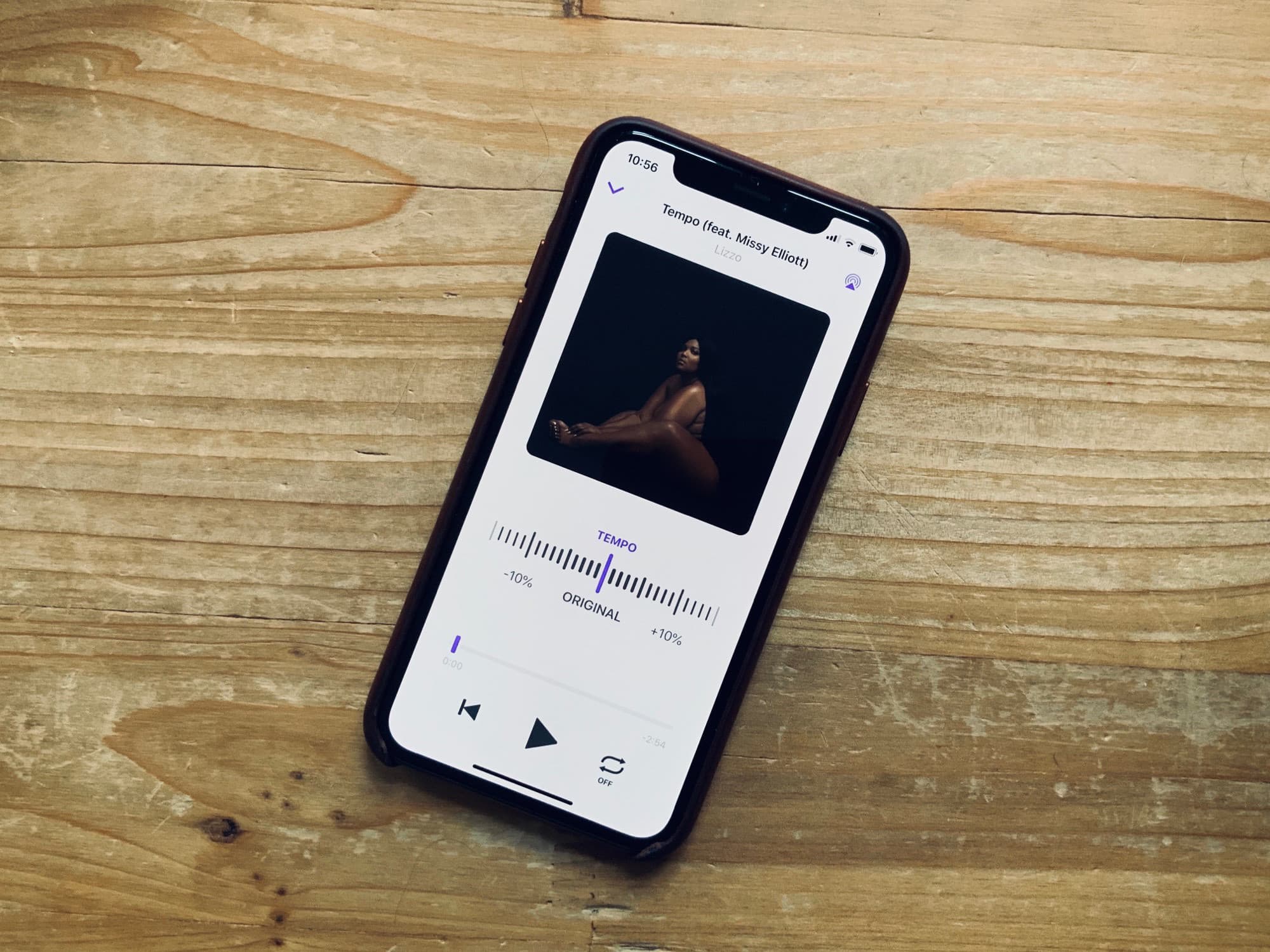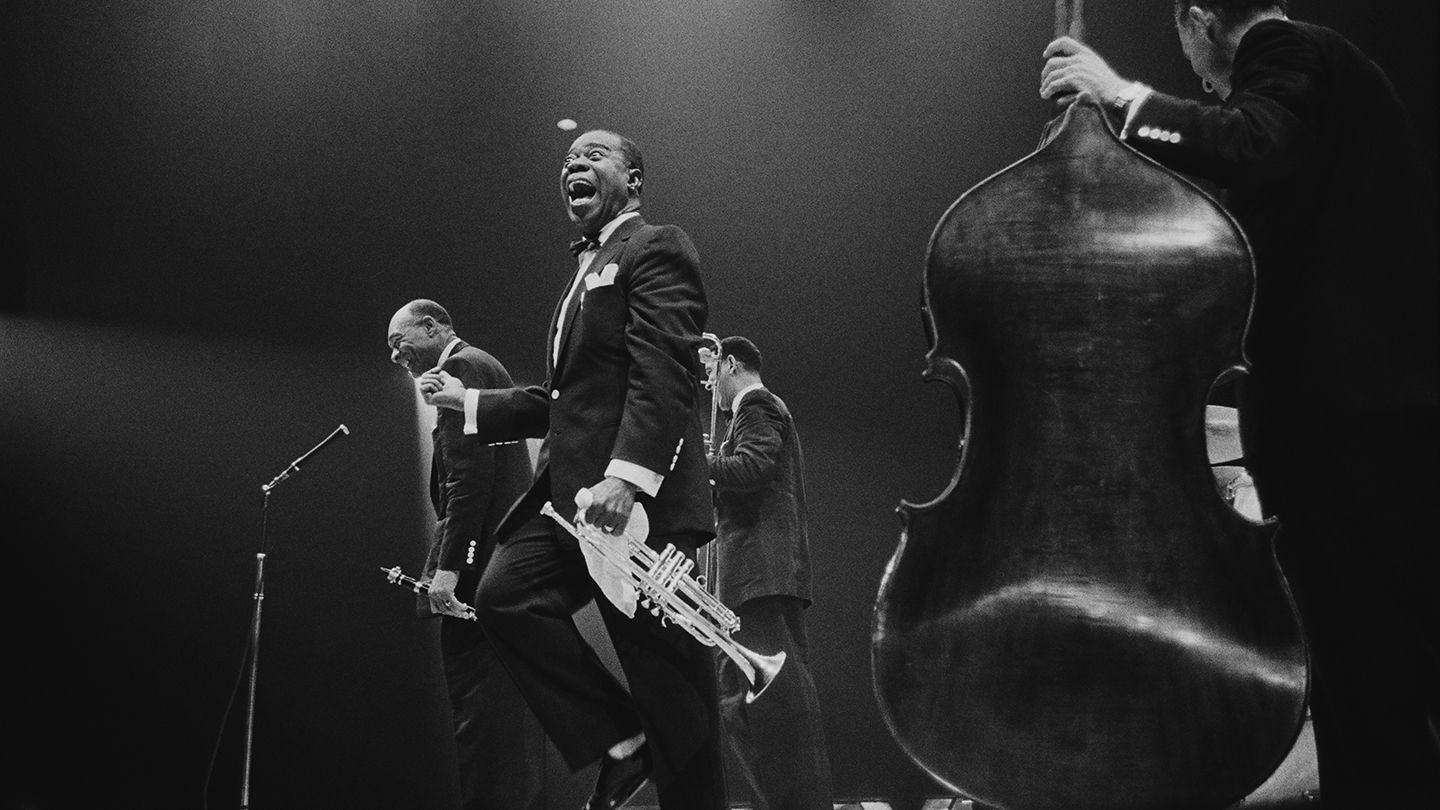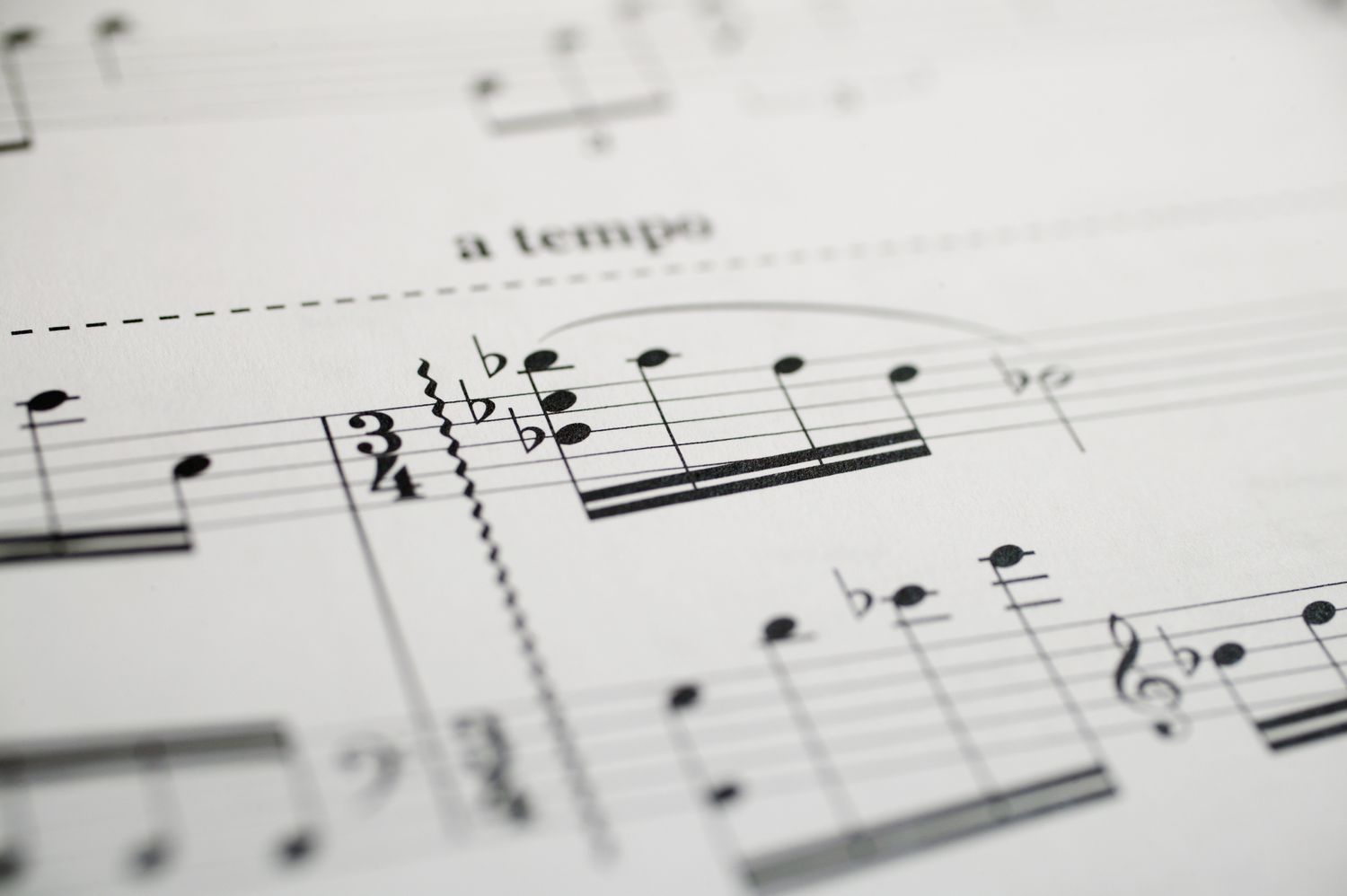Home>Production & Technology>Tempo>How To Explain Tempo In Music To Preschoolers


Tempo
How To Explain Tempo In Music To Preschoolers
Published: December 10, 2023
Learn how to introduce the concept of tempo in music to preschoolers. Engage their senses with fun and interactive activities to foster understanding of rhythm and beat.
(Many of the links in this article redirect to a specific reviewed product. Your purchase of these products through affiliate links helps to generate commission for AudioLover.com, at no extra cost. Learn more)
Table of Contents
Introduction
Introducing preschoolers to the world of music is a wonderful way to foster creativity, cognitive development, and a love for the arts. One fundamental concept in music that can be introduced to preschoolers is tempo. Tempo refers to the speed or pace of a piece of music. Understanding tempo allows children to appreciate and respond to different musical styles and rhythms.
Explaining tempo to preschoolers requires a fun and interactive approach. By engaging them in various activities and games, you can help them grasp the concept of tempo while having a great time. Whether it’s through singing, movement games, or creating their own musical instruments, there are numerous ways to teach preschoolers about tempo.
In this article, we will explore the importance of understanding tempo and provide a range of activities designed to explain tempo to preschoolers. By incorporating these activities into your lessons or playtime, you can ignite a lifelong love for music and rhythm in young hearts and minds.
What is Tempo?
Tempo is a fundamental concept in music. It refers to the speed at which a piece of music is played or sung. Just like how we can walk, run, or dance at different speeds, music can also have various tempos. Tempo is indicated by specific Italian terms, such as “adagio” (slow), “andante” (moderate), or “presto” (fast), among others.
Tempo plays a crucial role in setting the overall mood and feel of a musical piece. It can evoke different emotions and create a distinct atmosphere. A slow tempo can convey a sense of calmness and relaxation, while a fast tempo can generate excitement and energy.
Understanding tempo is important as it allows children to experience and appreciate the diversity of music. Children can start to recognize the differences between a slow, gentle melody and an upbeat, lively rhythm. They can learn to match their movements and actions to the tempo of the music, helping them develop coordination and a sense of timing.
Introducing tempo to preschoolers can be done through various activities that engage their senses and encourage active participation. By exploring tempo in a fun and interactive manner, children can deepen their understanding of music and develop a lifelong appreciation for its intricate elements.
Importance of Understanding Tempo
Understanding tempo is a fundamental aspect of music education for preschoolers. Here are a few reasons why it is essential:
- Enhances Listening Skills: Exploring different tempos helps children develop attentive listening skills. They learn to discern varying speeds and rhythms in music, which trains their ears to distinguish the nuances of sound.
- Improves Cognitive Development: Studies have shown that engaging with music, including understanding tempo, can enhance cognitive abilities in young children. It helps with pattern recognition, memory, and problem-solving skills.
- Develops Musicality: Understanding tempo allows children to develop a sense of musicality. They can learn to anticipate changes in tempo, follow beats, and synchronize their movements with the music.
- Encourages Expression: Tempo greatly influences the mood and emotions conveyed in music. By understanding tempo, children can express themselves by moving, dancing, or singing in ways that match the music’s pace and energy.
- Fosters Cultural Awareness: Different musical genres and cultures have their own unique tempos. By exploring various tempos, children gain exposure to a wide range of musical styles, promoting cultural appreciation and diversity.
Furthermore, introducing tempo to preschoolers provides a foundation for future music education. As they grow older, they can build upon their understanding of tempo to learn about more complex musical elements, such as rhythm, melody, and dynamics.
By nurturing an understanding of tempo from an early age, preschoolers can develop a deeper appreciation and connection to music, fostering creativity, self-expression, and a lifelong love for the arts.
Activities to Explain Tempo to Preschoolers
Teaching preschoolers about tempo can be done through a variety of engaging and interactive activities. Here are a few fun and educational ideas:
- Singing and Movement Games: Encourage kids to clap, stomp their feet, or move around the room to songs with different tempos. Start with slow-paced songs and gradually increase the speed. Ask them to match their movements to the tempo of the music, exploring fast and slow movements.
- Listening to Different Types of Music: Play a variety of songs with different tempos, styles, and genres. As the children listen, encourage them to identify and describe the tempo of each song. You can facilitate a discussion about how the tempo makes them feel and which songs make them want to move faster or slower.
- Making Musical Instruments: Engage children in a craft activity where they create their own musical instruments. You can guide them to create instruments with different sounds and tempos, such as shakers, drums, or even a homemade xylophone. Then, play songs with varying tempos and ask the children to match the tempo of their instruments to the music.
- Freeze Dance: Play a mix of songs with different tempos. Instruct children to dance freely when the music is playing, but freeze immediately when the music stops. Vary the tempos to challenge their ability to adjust their movements accordingly. This game reinforces the understanding of tempo while also promoting listening skills and self-regulation.
- Tempo Sorting Game: Create flashcards with pictures representing different tempos, such as a turtle for slow, a cheetah for fast, and a bunny for medium. Play songs with varying tempos and ask the children to hold up the appropriate flashcard that matches the tempo of the music. This activity helps develop visual recognition and association of tempos.
Remember to keep the activities age-appropriate and adaptable to the children’s interests and abilities. Make sure to provide opportunities for active participation, encourage creativity and exploration, and foster a positive and inclusive learning environment.
Through these activities, preschoolers can develop a deeper understanding of tempo while having fun and engaging with music. They will begin to appreciate the role of tempo in creating different moods and expressions in music, setting the stage for their musical journey.
Singing and Movement Games
Singing and movement games are an excellent way to introduce preschoolers to the concept of tempo. These activities not only help children understand different tempos but also encourage them to express themselves through music and movement. Here are some singing and movement games that you can incorporate into your lessons or playtime:
- Follow the Leader: Choose a child to be the leader and have them dictate the tempo by clapping or tapping a rhythm. The other children must follow the leader’s tempo and move accordingly. Encourage the leader to experiment with different tempos, from slow and steady to fast and lively.
- Animal Tempo: Assign each child a different animal and instruct them to move like that animal to the beat of a song. For example, they can move slowly like a turtle for a slow tempo song or hop quickly like a kangaroo for a fast tempo song. This game not only teaches tempo but also enhances creativity and imagination.
- Freeze Dance: Play a variety of songs with different tempos. When the music is playing, children can dance freely and move to the beat. However, when the music stops suddenly, they must freeze in their positions. Vary the tempos to challenge the children to adjust their movements accordingly. This game helps them understand tempo changes and develop their listening skills.
- Tempo Train: Arrange the children in a line, holding hands like a train. Start playing music with a slow tempo and encourage the children to walk slowly, taking small steps. Gradually increase the tempo, and as the music gets faster, the children should match the tempo by walking or running faster. This activity allows children to physically experience and adjust to different tempos.
- Copycat Singing: Sing a familiar song or nursery rhyme to the children, emphasizing the tempo. Then, have the children take turns being the “copycat.” The copycat’s task is to sing the song back to you, matching the tempo as closely as possible. This game helps children actively listen and replicate the rhythmic patterns and tempo of the song.
Remember to create a positive, supportive, and inclusive environment during these activities. Encourage children to explore their creativity and express themselves freely through movement and singing. By engaging in these singing and movement games, preschoolers can develop a deeper understanding of tempo while having a blast!
Listening to Different Types of Music
Listening to different types of music is a wonderful activity to help preschoolers understand and appreciate different tempos. By exposing them to a variety of musical styles and genres, children can begin to recognize and identify different tempos in a fun and engaging way. Here are some ideas to incorporate listening activities into your tempo lessons:
- Musical Mood Walk: Select a few songs with different tempos, such as classical, jazz, pop, and folk music. Play each song and ask the children to walk or move around the room, adjusting their pace and movements to match the tempo of the music. Encourage them to discuss how the different tempos make them feel and how it affects their walk.
- Tempo Guessing Game: Prepare a playlist of songs with varying tempos. Play a short excerpt of a song and have the children guess the tempo by raising their hands or using flashcards with tempo markings. This game not only develops their listening skills but also challenges them to recognize different tempos in a playful way.
- Dance Party: Create a dance party atmosphere and play a mix of songs with different tempos. Encourage children to get up and dance to the music, allowing them to freely express themselves through movement. Prompt them to adjust their dance style and energy according to the tempo of each song. This activity helps children to naturally synchronize their movements with the music.
- Tempo Sorting Activity: Prepare picture cards or objects that represent different tempos, such as a picture of a snail for slow tempo, a picture of a car for medium tempo, and a picture of a cheetah for fast tempo. Play various songs or clips and ask the children to sort the picture cards into the appropriate tempo category. This activity reinforces their ability to distinguish between different tempos.
- Tempo Walk: Take the children for a walk in a park or outdoor area. Play songs with different tempos through a portable speaker while walking. Encourage the children to adjust their steps and pace to match the tempo of the music. This activity not only enhances their understanding of tempo but also provides a multi-sensory experience in nature.
During these listening activities, encourage open discussions about how the tempos make the children feel and how it affects their movements and responses. Allow them to share their own interpretations and preferences, fostering their individual musical preferences and fostering a sense of musical expression.
By listening to different types of music, preschoolers can develop an appreciation for the varied tempos found in different musical genres. They will gain a deeper understanding of how tempo influences the mood and overall experience of the music they listen to.
Making Musical Instruments
Engaging preschoolers in the hands-on experience of making their own musical instruments is a fantastic way to help them understand tempo. By creating instruments that produce different sounds and tempos, children can actively explore and apply their knowledge of tempo in a creative and playful manner. Here are some ideas for making musical instruments with preschoolers:
- Shakers: Use small, empty containers such as plastic bottles or film canisters. Fill them with various materials such as rice, small pebbles, or dried beans. Seal the containers tightly and decorate them with colorful tape or stickers. Children can then shake the containers to create rhythmic sounds and explore different tempos.
- Drums: Make simple drums by using empty coffee cans, plastic containers, or shoeboxes. Stretch a piece of fabric or thin material over one end and secure it with rubber bands or tape. Children can use their hands or small sticks to tap on the fabric, creating different beats and tempos.
- Homemade Xylophone: Create a DIY xylophone by aligning and securing glass or plastic bottles of varying sizes in a row. Fill each bottle with different levels of water to produce distinct pitches. Children can use mallets or spoons to tap on the bottles, experimenting with different tempos and creating their own melodies.
- Egg Shakers: Decorate empty plastic Easter eggs with colorful tape, markers, or stickers. Fill them with small beads, rice, or beans and seal them shut with tape or glue. Children can shake the eggs to create rhythmic sounds and explore different tempos. They can also experiment with covering or partially uncovering the holes to change the sound and tempo.
- Paper Plate Tambourine: Decorate two paper plates and staple or glue them together, leaving a small opening. Insert small bells or jingle bells between the plates and secure them with tape or glue. Children can hold the tambourine by the edges and shake it or tap it with their hands to create percussive sounds at different tempos.
After making the instruments, encourage preschoolers to experiment with different tempos while playing them. Play songs with varying tempos and ask the children to match their instrument’s tempo to the music. This activity allows them to actively explore the connection between tempo, sounds, and musical expression.
Through the process of making their own musical instruments, preschoolers not only develop an understanding of tempo, but also enhance their fine motor skills, creativity, and imagination. They can proudly showcase their homemade instruments and continue to explore tempo and music through independent play and experimentation.
Conclusion
Introducing preschoolers to the concept of tempo in music is an exciting and enriching experience. By helping them understand and appreciate different tempos, we can ignite their passion for music and foster their creative and cognitive development. Through a variety of fun and interactive activities such as singing and movement games, listening to different types of music, and making their own musical instruments, preschoolers can actively engage with the concept of tempo.
Understanding tempo allows children to recognize and respond to the speed or pace of music, enabling them to move, dance, and express themselves accordingly. It enhances their listening skills, cognitive abilities, and sense of musicality. Additionally, exploring tempo exposes preschoolers to diverse musical genres and cultures, nurturing their appreciation for music’s richness and universality.
By incorporating activities that encourage active participation, creativity, and exploration, we can make learning about tempo enjoyable and memorable for preschoolers. Through singing and movement games, they can experience the physicality of tempo. Listening to different types of music enables them to develop a discerning ear and emotional connection to music. Making their own musical instruments empowers them to create sounds and rhythms in different tempos.
Overall, introducing tempo to preschoolers lays a solid foundation for their future music education and fosters a lifelong love for music and the arts. As they continue to grow and explore the world of music, their understanding of tempo will deepen, allowing them to appreciate the nuances and intricacies of rhythm, melody, and dynamics.
Engage and inspire preschoolers through the exploration of tempo, and watch as they develop a deeper appreciation for music’s magic. Let us embark on this musical journey with them, nurturing their passion, curiosity, and musicality one tempo at a time.


